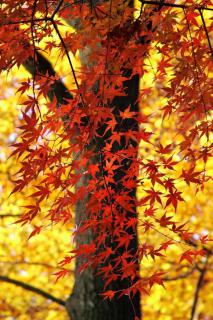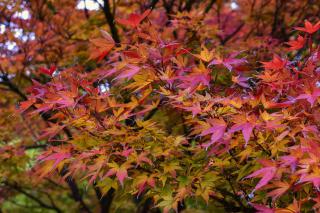

Acer palmatum, or Palmate maple, is a type of Japanese maple that is without a doubt one of the most beautiful autumn shrubs.
Principal Palmate Maple facts
Name – Acer palmatum
Family – Sapindaceae
Type – tree
Height – 16 to 26 feet (5 to 8 meters)
Exposure – full sun, part sun
Soil – heath soil
Foliage – deciduous – Flowering – Spring
It bestows us all year long with leaves in a magnificent range of colors.
Plant Japanese maple preferably in fall or spring.
It is strongly advised to plant Japanese maple in pure heath soil, or mixed with soil mix.

Japanese maple naturally takes on magnificent shapes, sometimes layered, weeping or natural. This differs depending on the variety.
If, however, you wish to reduce branches, do it between the months of November, after leaves have fallen, and March, before spring growth.
Like other maple species, Acer palmatum leaves might be covered in black spots.

A magnificent tree with fiery colors, all these species of Japanese maple furnish palmate or dissected foliage that catch the eye from the end of winter up to fall.
Its red, orange or tender green hues certainly make it one of the most beautiful trees to pair with your heath plant beds.
Acer palmatum is perfectly adapted to the setting up of a Zen Garden or Japanese garden, both in the ground or in a pot.
The most common species and varieties include: Acer palmatum ‘dissectum’, ‘Senkaki’, ‘bloodgood’, ‘atropurpureum’, ‘butterfly’ and ‘heptalobum’.
Mulch based on maritime pine bark is perfectly appropriate for this tree because it provides acidity to the soil while protecting roots when winters are cold and retaining moisture.